
Flight from Sibu to Kuala Lumpur

Flight Information from Sibu (SBW) to Kuala Lumpur (KUL)
Shortest flight time
2 hr(s)

Direct Airline from Sibu to Kuala Lumpur
Flight Schedule from Sibu to Kuala Lumpur
Airline | Departure Time | Arrival Time | Origin airport | Destination airport | |
|---|---|---|---|---|---|
 AirAsia Berhad (Malaysia) | 08:50 | 10:55 | Sibu (SBW) | Kuala Lumpur (KUL) | Book flight |
 Malaysia Airlines | 11:15 | 13:20 | Sibu (SBW) | Kuala Lumpur (KUL) | Book flight |
 AirAsia Berhad (Malaysia) | 12:05 | 14:10 | Sibu (SBW) | Kuala Lumpur (KUL) | Book flight |
 AirAsia Berhad (Malaysia) | 14:45 | 16:55 | Sibu (SBW) | Kuala Lumpur (KUL) | Book flight |
 Batik Air Malaysia | 17:00 | 19:10 | Sibu (SBW) | Kuala Lumpur (KUL) | Book flight |
 AirAsia Berhad (Malaysia) | 17:20 | 19:25 | Sibu (SBW) | Kuala Lumpur (KUL) | Book flight |
 Malaysia Airlines | 19:10 | 21:10 | Sibu (SBW) | Kuala Lumpur (KUL) | Book flight |
 AirAsia Berhad (Malaysia) | 19:55 | 22:00 | Sibu (SBW) | Kuala Lumpur (KUL) | Book flight |
 AirAsia Berhad (Malaysia) | 21:10 | 23:15 | Sibu (SBW) | Kuala Lumpur (KUL) | Book flight |
Top Flight Deals on Popular Routes
Flight Confirmed? Lock in Your Hotel Today!
When is the cheapest flight time from Sibu to Kuala Lumpur?
Exclusive for new users—register today!
Code:JOMJALAN
About Kuala Lumpur
Direct Flights
Multiple airlines offer direct flights from Sibu to Kuala Lumpur, providing travelers with convenient options throughout the day. Here's a detailed breakdown of the airlines servicing this route:
Airline: Batik Air
Average Flight Duration: 2 hours 10 minutes
Aircraft Used: Boeing 737
Batik Air Malaysia (formerly known as Malindo Air) is a full-service Malaysian airline and a subsidiary of Indonesia's Lion Air Group. With its rebranding in April 2022, Batik Air operates from Kuala Lumpur International Airport (KLIA) and Sultan Abdul Aziz Shah Airport in Subang. The airline offers a hybrid service model that combines competitive fares with selected premium services, making it an excellent choice for travelers seeking comfort and value.
Batik Air operates approximately 800 flights weekly to over 40 destinations, including domestic Malaysian routes and international destinations across the Asia-Pacific region, South Asia, and the Middle East. The Sibu to Kuala Lumpur route is one of their regular domestic services, providing reliable connectivity between these two important Malaysian cities.
Airline: AirAsia
Average Flight Duration: 2 hours
Aircraft Used: Airbus A320
AirAsia is one of Malaysia's leading low-cost carriers, offering affordable flights between Sibu and Kuala Lumpur. The airline operates the route with their modern Airbus A320 aircraft, which features a comfortable cabin configuration while maintaining cost efficiency.
The A320 aircraft used by AirAsia typically includes features such as:
- Cabin Height: 7 ft 4 in
- Cabin Width: 12 ft 2 in
- Cabin Length: 90 ft 2 in
- Efficient seating arrangement to maximize capacity
AirAsia's flight duration of approximately 2 hours makes it one of the quickest options for travelers looking to reach Kuala Lumpur from Sibu.
Airline: Malaysia Airlines
Average Flight Duration: 2 hours
Aircraft Used: Boeing 737
As Malaysia's national carrier, Malaysia Airlines offers full-service flights between Sibu and Kuala Lumpur. Their Boeing 737 aircraft provide a comfortable flying experience with both economy and business class options available.
Malaysia Airlines' service includes complimentary meals, beverages, and entertainment, making the 2-hour journey more enjoyable. The airline also offers seamless connections through its hub at Kuala Lumpur International Airport for passengers traveling onward to international destinations.
Airline: AirAsia (Second Daily Flight)
Average Flight Duration: 2 hours 5 minutes
Aircraft Used: Airbus A320
AirAsia operates multiple daily flights on the Sibu-Kuala Lumpur route, giving travelers flexibility in choosing departure times that suit their schedules. This second daily flight has a slightly longer duration of 2 hours and 5 minutes but offers the same comfortable Airbus A320 experience.
The Airbus A320 is renowned for its reliability and efficiency, making it ideal for domestic routes like this one. Passengers can expect a smooth journey with AirAsia's signature low-cost model that allows for affordable travel without compromising on essential comforts.
Airline: AirAsia (Third Daily Flight)
Average Flight Duration: 2 hours 5 minutes
Aircraft Used: Airbus A320
With high demand on the Sibu to Kuala Lumpur route, AirAsia offers a third daily flight option with the same reliable service and aircraft type. This flight also takes approximately 2 hours and 5 minutes, providing another convenient option for travelers.
The consistent use of Airbus A320 aircraft across AirAsia's fleet ensures that passengers receive a familiar experience regardless of which flight they choose. The aircraft's spacious cabin and efficient design contribute to a comfortable journey between these two Malaysian destinations.
Airline: AirAsia (Fourth Daily Flight)
Average Flight Duration: 2 hours 5 minutes
Aircraft Used: Airbus A320
For even more flexibility, AirAsia's fourth daily flight on this route maintains the same high standards and comfortable Airbus A320 aircraft. This consistency allows travelers to choose the most convenient departure time without worrying about differences in aircraft type or service quality.
The A320's modern amenities and AirAsia's streamlined service model combine to create an efficient flying experience for the 2-hour and 5-minute journey from Sibu to Kuala Lumpur.
Airline: AirAsia (Fifth Daily Flight)
Average Flight Duration: 2 hours 5 minutes
Aircraft Used: Airbus A320
Demonstrating the popularity and importance of this route, AirAsia offers a fifth daily flight option for travelers between Sibu and Kuala Lumpur. This extensive schedule ensures that passengers can find a flight time that perfectly aligns with their travel plans.
Like the other AirAsia services on this route, this flight utilizes the reliable Airbus A320 aircraft and takes approximately 2 hours and 5 minutes to reach Kuala Lumpur from Sibu.
Airline: Malaysia Airlines (Second Daily Flight)
Average Flight Duration: 2 hours
Aircraft Used: Boeing 737
Malaysia Airlines' second daily flight provides another full-service option for travelers preferring a premium experience. The Boeing 737 aircraft offers both economy and business class seating, with the flight taking approximately 2 hours from departure to arrival.
Passengers on Malaysia Airlines enjoy comprehensive in-flight services, including meals, entertainment, and the ability to earn and redeem frequent flyer miles. The airline's reputation for quality service makes it a popular choice for business travelers and those seeking additional comfort on this domestic route.
Layover Flights
No layover flights are available for the Sibu to Kuala Lumpur route, as direct flights are operated regularly by multiple airlines. Direct flights are the most efficient way to travel between these two cities, with flight times ranging from 2 to 2 hours and 10 minutes.
Information about schedule and airline subject to change based on airline policy. Please check regularly at Traveloka App.
About Sibu
Location
Sibu is a vibrant city located in the central region of Sarawak, Malaysia, on the island of Borneo. Situated at the confluence of the Rajang and Igan Rivers, Sibu is often referred to as the "Swan City" and serves as an important commercial and industrial hub for the region. With a rich cultural heritage influenced by Chinese, Malay, and indigenous populations, Sibu offers visitors a unique glimpse into the diverse tapestry of Malaysian society.
The city is approximately 60 kilometers from the South China Sea and is surrounded by lush rainforests and river landscapes that characterize the natural beauty of Sarawak. Sibu's strategic location on the mighty Rajang River (Malaysia's longest river) has historically made it an important port city and center for timber processing industries.
Airport Terminal
Sibu Airport (SBW) is a modern domestic airport serving the city and surrounding regions. The terminal building is well-designed and efficiently organized to handle the steady flow of passengers traveling to and from major Malaysian cities, including Kuala Lumpur.
The airport features a single passenger terminal with basic amenities for travelers, including check-in counters, security screening areas, arrival halls, and baggage claim facilities. Despite its relatively small size compared to international airports, Sibu Airport provides all essential services needed for a comfortable domestic travel experience.
Transport to Airport
Getting to Sibu Airport is straightforward, with several transportation options available:
Taxi Services: Taxis are readily available throughout Sibu and provide direct service to the airport. The journey from Sibu town center to the airport typically takes about 15-20 minutes, depending on traffic conditions. Fares are reasonable, making this a convenient option for travelers with luggage.
Ride-Sharing Services: Modern ride-sharing platforms are operational in Sibu, offering another convenient way to reach the airport. These services can be booked through smartphone applications and often provide competitive pricing compared to traditional taxis.
Public Buses: For budget-conscious travelers, public buses connect various parts of Sibu to the vicinity of the airport. While not as direct as taxis, they provide an economical alternative for those with lighter luggage and more flexible schedules.
Private Vehicles: Many locals and visitors opt to drive to the airport, which offers parking facilities for both short and long-term stays. The road network connecting Sibu town to the airport is well-maintained and clearly signposted.
Facilities
Sibu Airport provides a range of facilities to ensure a comfortable experience for departing passengers:
Food and Beverage: Several cafés and food kiosks offer local Malaysian cuisine and international snacks, perfect for a quick bite before your flight.
Retail Outlets: A selection of shops selling souvenirs, travel essentials, and local products are available within the terminal building.
Waiting Areas: Comfortable seating areas throughout the terminal allow passengers to relax before their flights.
Information Counter: Helpful staff are available to assist with flight inquiries, airport navigation, and general travel information.
ATMs: Banking facilities, including ATMs, are accessible within the terminal for last-minute cash withdrawals.
Wi-Fi: Complimentary wireless internet access is available throughout the terminal, allowing passengers to stay connected while waiting for their flights.
Prayer Rooms: Dedicated prayer facilities are provided for Muslim travelers.
While Sibu Airport may not offer the extensive facilities found in larger international airports, it efficiently serves its purpose as a domestic aviation gateway with all necessary amenities for a pleasant travel experience.
About Kuala Lumpur International Airport - Kuala Lumpur
Location
Kuala Lumpur International Airport (KLIA) is Malaysia's primary international gateway, located in Sepang district, approximately 45 kilometers south of Kuala Lumpur city center. This world-class aviation hub sits amidst palm plantations and strategically connects Malaysia to over 130 destinations across six continents.
KLIA occupies a vast area of about 100 square kilometers, making it one of the largest airport sites in the world. Its strategic location within Southeast Asia positions it as a crucial connecting point between the East and West, serving as a major transit hub for international travelers.
The airport's coordinates are approximately 2.744344, 101.717259, placing it in the Asia/Kuala_Lumpur time zone.
Airport Terminal
Kuala Lumpur International Airport features multiple terminals designed to handle different types of traffic:
Terminal 1 (KLIA Main Terminal): This expansive terminal primarily serves full-service carriers, including Malaysia Airlines, Batik Air Malaysia, and other international airlines. The sophisticated design includes a central core (the Satellite Terminal) connected to the main building via an automated people mover system. Terminal 1 features cutting-edge architecture with extensive use of natural light, indoor gardens, and a design inspired by Islamic geometric patterns.
Terminal 2 (klia2): Opened in 2014 as a replacement for the Low-Cost Carrier Terminal, klia2 is one of the world's largest purpose-built terminals for low-cost carriers. It primarily serves AirAsia and other budget airlines. Despite its focus on cost-efficiency, klia2 offers extensive facilities including a large retail area, diverse dining options, and convenient connections to ground transportation.
Both terminals are equipped with modern amenities and designed to handle the significant passenger traffic that passes through KLIA daily. On average, there are 472 passenger flights scheduled to take off from Kuala Lumpur every day, connecting to 135 non-stop destinations in 39 countries.
Transport From Airport
Travelers arriving at KLIA have multiple transportation options to reach Kuala Lumpur city center and other destinations:
KLIA Ekspres: This high-speed train service connects KLIA directly to KL Sentral, the city's main transportation hub, in just 28 minutes. Trains run at regular intervals throughout the day, providing a fast and reliable transfer option.
KLIA Transit: Similar to the KLIA Ekspres but making intermediate stops at stations including Bandar Tasik Selatan, Putrajaya, and Cyberjaya. This service is ideal for passengers heading to these locations.
Airport Coach Services: Several bus companies operate regular services between KLIA and various destinations in Kuala Lumpur, including KL Sentral, Pudu Sentral, and major hotels. These coaches offer an economical alternative to rail services.
Taxis and Ride-Sharing: Both traditional taxis and ride-sharing services are readily available at designated pickup points. The journey to central Kuala Lumpur typically takes 45-60 minutes, depending on traffic conditions.
Car Rental: Multiple international and local car rental companies have counters at both terminals, offering a range of vehicles for those who prefer to drive themselves.
Limousine Services: Premium limousine transfers can be pre-arranged or booked on arrival for a more luxurious transfer experience.
The excellent transportation infrastructure connecting KLIA to Kuala Lumpur ensures that travelers can easily reach their final destinations after landing.
Facilities
KLIA boasts world-class facilities designed to enhance the passenger experience:
Dining Options: Both terminals feature an extensive range of restaurants, cafés, and food courts offering Malaysian specialties and international cuisine. From quick snacks to fine dining, options are available 24/7 to accommodate passengers on all flight schedules.
Retail Shopping: A comprehensive selection of duty-free shops, luxury boutiques, and local product retailers can be found throughout both terminals. KLIA's shopping areas feature both international brands and stores showcasing Malaysian products and crafts.
Lounges: Multiple airline lounges and pay-per-use facilities offer comfortable spaces for relaxation, refreshment, and work. These lounges typically provide complimentary food and beverages, shower facilities, business centers, and quiet areas for rest.
Accommodation: The Sama-Sama Hotel is directly connected to Terminal 1 via a covered walkway, while capsule hotels and transit hotels within both terminals offer convenient options for passengers with long layovers or early departures.
Wellness Facilities: Spa services, massage centers, and fitness facilities are available for travelers seeking relaxation or exercise between flights.
Prayer Rooms: Dedicated prayer facilities for Muslim travelers are located throughout both terminals.
Family Services: Dedicated facilities for traveling families include baby care rooms, children's play areas, and family-friendly restrooms.
Connectivity: Complimentary Wi-Fi is available throughout the airport, along with charging stations for electronic devices and business centers for travelers needing to work.
Medical Services: Medical clinics provide healthcare services for travelers requiring medical attention.
Baggage Services: Left luggage facilities, baggage wrapping, and porter services are available to assist with luggage management.
KLIA's comprehensive facilities ensure that passengers enjoy a comfortable and convenient experience whether they're departing, arriving, or in transit.
FAQ Sibu to Kuala Lumpur Flight
1. Question: What is the flight duration from Sibu to Kuala Lumpur?
Answer: Direct flights from Sibu to Kuala Lumpur typically take between 2 hours to 2 hours and 10 minutes, depending on the airline and aircraft type. Batik Air flights usually take around 2 hours and 10 minutes, while AirAsia and Malaysia Airlines flights generally complete the journey in approximately 2 hours.
2. Question: Which airlines operate flights between Sibu and Kuala Lumpur?
Answer: Several airlines operate direct flights on this route, including Batik Air Malaysia (formerly Malindo Air), AirAsia, and Malaysia Airlines. These carriers offer multiple daily flights, giving travelers plenty of options to choose from when planning their journey.
3. Question: What is the baggage allowance for flights from Sibu to Kuala Lumpur?
Answer: Baggage allowances vary by airline and fare type. Generally, Malaysia Airlines and Batik Air include checked baggage in most fare types, while AirAsia often charges separately for checked luggage. Economy passengers on full-service airlines typically receive 20-30kg of checked baggage, while business class passengers may receive 30-40kg. Always check your specific fare details when booking through Traveloka to confirm your baggage allowance.
4. Question: How early should I arrive at Sibu Airport for my flight to Kuala Lumpur?
Answer: For domestic flights within Malaysia, it's recommended to arrive at Sibu Airport at least 90 minutes before your scheduled departure time. This allows sufficient time for check-in, security screening, and boarding procedures. During peak travel periods or holidays, consider arriving 2 hours before departure to avoid any potential delays.
5. Question: Which terminal at Kuala Lumpur International Airport will my flight from Sibu arrive at?
Answer: Flights operated by Malaysia Airlines and Batik Air typically arrive at Terminal 1 (KLIA Main Terminal), while AirAsia flights usually arrive at Terminal 2 (klia2). Always check your flight details when booking through Traveloka to confirm your arrival terminal, as this information is important for planning your onward transportation.
6. Question: What is the best time to book flights from Sibu to Kuala Lumpur for the lowest fares?
Answer: Generally, booking 4-6 weeks in advance often yields the best fares for domestic flights within Malaysia. Midweek flights (Tuesday to Thursday) typically offer lower prices compared to weekend flights. Using Traveloka's price alert feature can help you track fare changes and book when prices drop. Additionally, flying during off-peak seasons (avoiding major holidays and school vacation periods) can result in significant savings.
7. Question: Are there any direct international connections available from Kuala Lumpur after arriving from Sibu?
Answer: Yes, Kuala Lumpur International Airport serves as Malaysia's primary international gateway with flights to over 130 destinations across 39 countries. After arriving from Sibu, passengers can connect to numerous international destinations throughout Asia, Australia, the Middle East, Europe, and beyond. Both Malaysia Airlines and AirAsia operate extensive international networks from KLIA, making it convenient to plan onward travel.
8. Question: What happens if my flight from Sibu to Kuala Lumpur is delayed or cancelled?
Answer: In case of significant delays or cancellations, airlines typically offer options such as rebooking on the next available flight, rerouting, or refunds according to their specific policies. When you book through Traveloka, you'll receive timely notifications about any schedule changes, and our customer service team can assist with rebooking arrangements. It's advisable to keep your contact details updated when booking so that airlines can notify you directly about any changes to your flight schedule.
Other Ways to Travel From Sibu to Kuala Lumpur
While flying is the most efficient way to travel between Sibu and Kuala Lumpur, there are alternative options for those seeking a different travel experience:
By Sea and Land Combination
Route: Sibu → Kuching (by boat) → Kuala Lumpur (by flight)
Duration: Approximately 24-36 hours total
This journey begins with a boat ride along the scenic Rajang River from Sibu to Kuching, which takes about 4-5 hours. From Kuching, travelers can then catch a direct flight to Kuala Lumpur (flight time approximately 1 hour 40 minutes). While significantly longer than flying directly, this option allows you to experience Malaysia's largest river and enjoy the landscapes of Sarawak.
By Road and Sea Combination
Route: Sibu → Bintulu → Miri → Brunei → Sabah → Peninsula Malaysia (by ferry) → Kuala Lumpur
Duration: Several days (4-7 days depending on stops)
This adventurous route involves traveling by bus or car from Sibu northward through Sarawak, crossing into Brunei and Sabah, before taking a ferry to Peninsula Malaysia and then continuing by road to Kuala Lumpur. This journey is only recommended for those with plenty of time who wish to explore multiple destinations along the way. The total distance covered is over 2,000 kilometers, making it an epic road trip rather than a practical transportation option.
By Private Charter
Route: Sibu → Kuala Lumpur (direct)
Duration: Varies based on vessel or aircraft type
For travelers with specific requirements or larger groups, private charter options (either boats or small aircraft) can sometimes be arranged. These services come at a premium price but offer maximum flexibility in terms of departure times and personalized service.
It's important to note that due to the geographical separation between Borneo (where Sibu is located) and Peninsula Malaysia (where Kuala Lumpur is situated), direct land travel is not possible. The most practical and time-efficient method of travel between these two destinations remains air travel, with multiple daily flights offering convenient and affordable connections.
Explore Kuala Lumpur
Popular Destinations in Kuala Lumpur
1. Petronas Twin Towers
The iconic 88-story twin skyscrapers stand as the symbol of modern Malaysia. Reaching 452 meters high, these magnificent towers offer visitors access to the Skybridge on the 41st floor and an observation deck on the 86th floor, providing breathtaking panoramic views of the city. The towers are particularly stunning when illuminated at night, creating a dazzling display against Kuala Lumpur's skyline.
2. Batu Caves
Located just outside the city center, this limestone hill features a series of caves and cave temples, crowned by the massive golden statue of Lord Murugan standing 42.7 meters tall. Visitors must climb 272 colorful steps to reach the main Temple Cave, which houses several Hindu shrines. The caves are not only a religious site but also a popular spot for rock climbing enthusiasts.
3. Central Market (Pasar Seni)
This vibrant marketplace, housed in a distinctive blue Art Deco building, was originally built in 1888 as a wet market. Today, it serves as a cultural hub where visitors can shop for traditional crafts, artwork, souvenirs, and clothing. The market is organized by cultural zones, reflecting Malaysia's diverse ethnic heritage, and features regular cultural performances and demonstrations of traditional crafts.
4. Merdeka Square (Dataran Merdeka)
This historic square marks the spot where the Malaysian flag was first raised at independence in 1957. Surrounded by beautiful colonial architecture, including the Sultan Abdul Samad Building with its distinctive Moorish styling and clock tower, Merdeka Square represents an important piece of Malaysian history. The square hosts many national celebrations and events throughout the year.
5. Kuala Lumpur Bird Park
Covering 20.9 acres, this is one of the world's largest free-flight walk-in aviaries. Home to more than 3,000 birds representing approximately 200 species, the park offers visitors the chance to observe these beautiful creatures in a natural setting. Highlights include daily feeding sessions, bird shows, and educational programs that provide insight into the diverse avian population of Malaysia and beyond.
Popular Cuisine in Kuala Lumpur
1. Nasi Lemak
Considered Malaysia's national dish, this aromatic rice cooked in coconut milk and pandan leaf is traditionally served with sambal (spicy chili paste), fried anchovies, roasted peanuts, cucumber slices, and a boiled egg. In Kuala Lumpur, you'll find countless variations, from simple street food versions wrapped in banana leaf to upscale interpretations served with premium additions like fried chicken, rendang beef, or seafood.
2. Satay
These delicious skewers of marinated, grilled meat (typically chicken, beef, or mutton) are served with a rich peanut dipping sauce, cucumber slices, and ketupat (rice cakes). Kuala Lumpur's satay stalls often have their own special marinades, passed down through generations, creating distinctive flavors that keep customers coming back for more.
3. Char Kway Teow
This popular stir-fried noodle dish features flat rice noodles cooked with light and dark soy sauce, chili, prawns, cockles, bean sprouts, and Chinese lap cheong sausage. In Kuala Lumpur, you'll find excellent versions in areas like Jalan Alor and Chinatown, where skilled wok masters create this dish with the perfect "wok hei" (breath of the wok) flavor.
4. Roti Canai
This flaky, flatbread is a Malaysian breakfast staple, though it's enjoyed throughout the day. Traditionally served with dhal (lentil curry) or other curry dishes, roti canai can be found everywhere from humble mamak stalls to upscale restaurants. Kuala Lumpur offers countless variations, including versions stuffed with eggs (roti telur), sardines (roti sardin), or banana (roti pisang).
5. Laksa
This spicy noodle soup dish comes in many regional variations throughout Malaysia. In Kuala Lumpur, you'll commonly find Curry Laksa (also called Curry Mee), featuring a rich coconut-based curry broth with yellow noodles or rice vermicelli, tofu puffs, bean sprouts, and various proteins. The dish perfectly represents Malaysia's cultural fusion, combining Chinese noodles with Malay spices and Indian curry influences.
Kuala Lumpur's diverse culinary landscape reflects the multicultural character of Malaysia itself, with influences from Malay, Chinese, Indian, and indigenous traditions creating one of Asia's most exciting food scenes. From street food stalls to fine dining restaurants, the city offers endless opportunities to explore Malaysia's rich gastronomic heritage.
Flight Information to Kuala Lumpur
Flight Duration | 2 hr(s) 0 mins |
Airport in Sibu | |
Airport in Kuala Lumpur |
Frequently Asked Questions
Popular Airline
For all your unique travel choices, we got you
Popular Routes from Sibu
Popular Routes from Kuala Lumpur International Airport
Popular Airline to Kuala Lumpur
Popular Routes
Popular Destinations
Popular Airlines
Popular Airline & Destination
Popular Airports
Top Domestic Destination
Top International Destination
Top Flight Airport





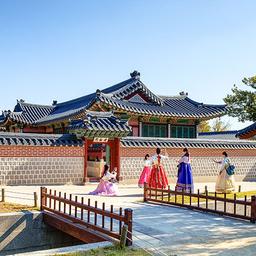




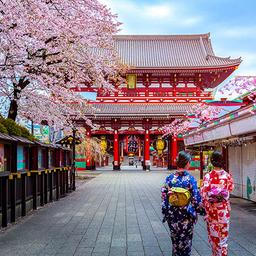









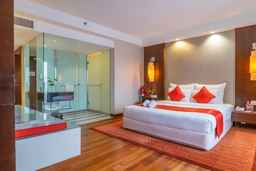























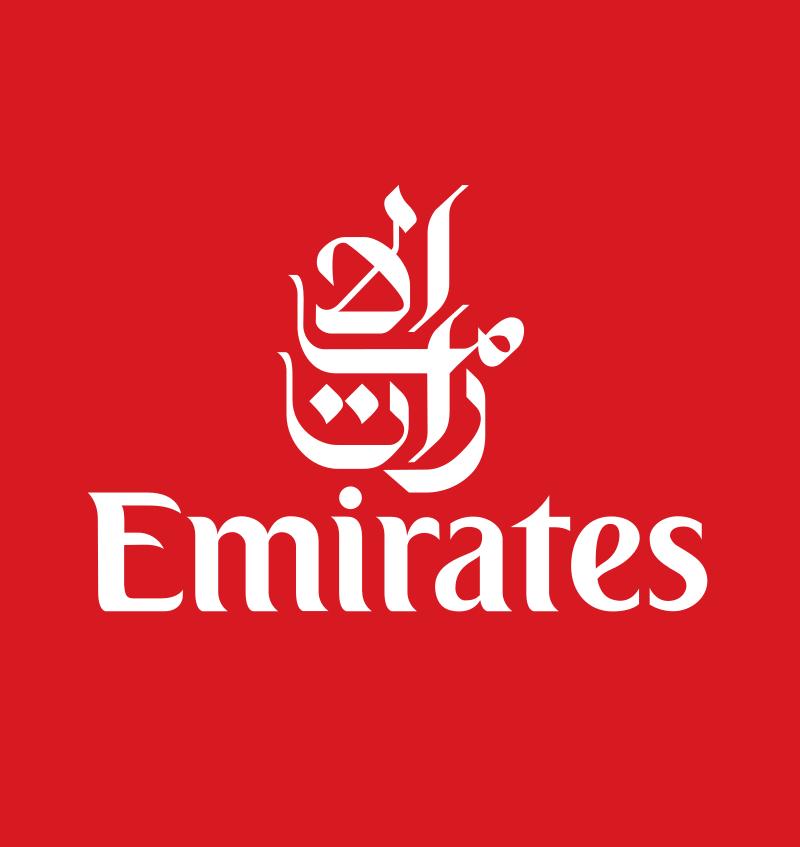













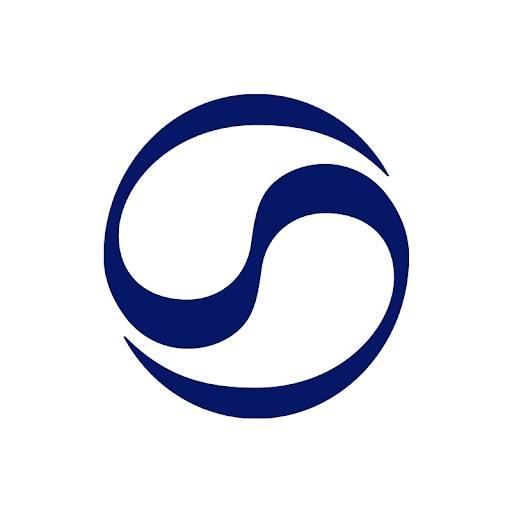

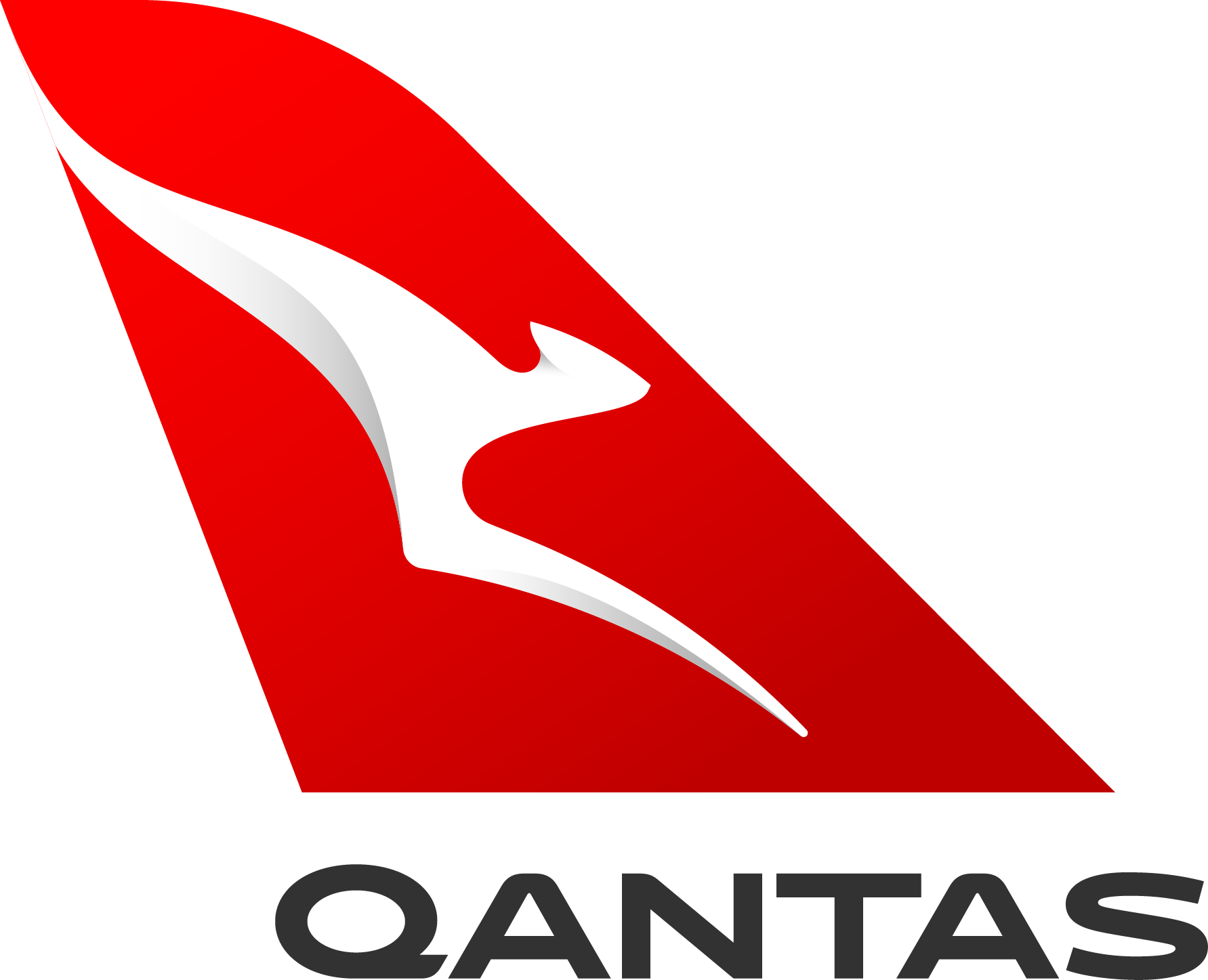



















 Facebook
Facebook Instagram
Instagram TikTok
TikTok Youtube
Youtube Twitter
Twitter Telegram
Telegram